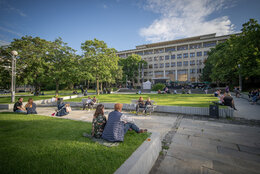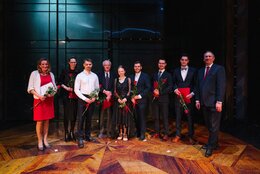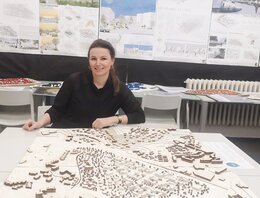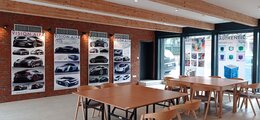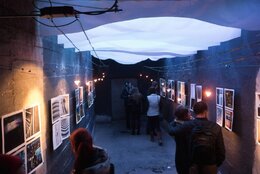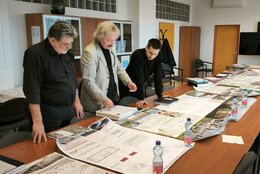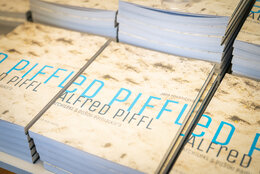hlavný riešiteľ: prof. Ing. arch. Ľubica Vitková, PhD.I Erasmus+ 2019-1-RO01-KA203-063878, doba riešenia: 01.10.2019 - 31.12.2022
Many European programs and projects, derived from the EU's”Cohesion policy”established by Lisbon Treaty, points to ”economic, social and territorial cohesion”. Many of the projects funded by ERDF, among whichDanube Transnational Programmefocus on different themes related to Danube seeking answers and solutions to strengthen the cross-border cooperation and to create a coherent network of valuable assets and capabilities to sustain an inclusive and sustainable development in this region.Particularly, the DANUrB project(http://www.interreg-danube.eu/approved-projects/danurb) has created a vision of Danube as an identifiable ”tourist destination brand and a cultural promenadeat European level, offering thematic routes and development opportunities that can increase the number of visitors and can prolong their stay in the region”.In a critical view on the existing project, we can say that although it also included universities in its consortium, DANUrB did not specifically pursued the creation of an educational framework dedicated to the inclusive development of Danube cities, and did not focus on the students to be the main beneficiary of the trans-disciplinary formative process that regards the development potential of the Danube spaces and landscapes. In the desire for a coherent and more balanced development of the Danube region is essential toconsider the differences inthe existinglevels of development between the various Danube countries and cities and, at the same time, the differences in the problems faced by the big cities/capitals and the small and medium-sized cities (SMCs) along the river.Most of these small and medium-sized cities are confronted with shrinkage processes, labor shortages, loss of local identity together with diminishing ofthe river industry. In many cases they are sprawled or incoherent as spatial development, encountering aggressions on the natural landscapes and loss of the relationship with the river. The notable differences of development between the Lower Danube and the Central-Western Danube come to confront these small and medium size cities, mirroring a series of similarities and/or contrasts, in terms of land reserves, dynamics of peripheries, conflicts between natural landscape and residentialareas, unused buildings and lack of touristic attractions.
Mnohé európske programy a projekty odvodené od politiky súdržnosti EÚ, ktorá bola ustanovená Lisabonskou zmluvou, poukazujú na "hospodársku, sociálnu a územnú súdržnosť". Mnohé z projektov financovaných z EFRR, medzi ktoré patrí aj Dunajský nadnárodný program, sa zameriavajú na rôzne témy súvisiace s Dunajom a hľadajú odpovede a riešenia na posilnenie cezhraničnej spolupráce a vytvorenie koherentnej siete cenných aktív a schopností na udržanie inkluzívneho a udržateľného rozvoja v tomto regióne. najmä projekt DANUrB (http://www.interreg-danube.eu/approved-projects/danurb) vytvoril víziu Dunaja ako identifikovateľnej "značky turistickej destinácie a kultúrnej promenády na európskej úrovni, ktorá ponúka tematické trasy a možnosti rozvoja, ktoré môžu zvýšiť počet návštevníkov a predĺžiť ich pobyt v regióne". Pri kritickom pohľade na existujúci projekt môžeme povedať, že hoci do svojho konzorcia zahrnul aj univerzity, DANUrB nesledoval osobitne vytvorenie vzdelávacieho rámca venovaného inkluzívnemu rozvoju podunajských miest a nezameriaval sa na študentov, ktorí by boli hlavným príjemcom transdisciplinárneho formačného procesu, ktorý sa týka rozvojového potenciálu podunajských priestorov a krajiny. V snahe o koherentný a vyváženejší rozvoj podunajského regiónu je nevyhnutné zohľadniť rozdiely v existujúcej úrovni rozvoja medzi jednotlivými podunajskými krajinami a mestami a zároveň rozdiely v problémoch, ktorým čelia veľké mestá/hlavné mestá a malé a stredné mestá (SMC) pozdĺž rieky. väčšina týchto malých a stredných miest čelí procesom zmenšovania, nedostatku pracovných síl, strate miestnej identity spolu s úbytkom riečneho priemyslu. V mnohých prípadoch sa rozširujú alebo sú nesúvisle priestorovo rozvíjané, stretávajú sa s agresiou voči prírodnej krajine a stratou vzťahu k rieke. Tieto malé a stredne veľké mestá sa stretávajú s výraznými rozdielmi v rozvoji medzi Dolným a Stredným a Západným Dunajom, ktoré odrážajú rad podobností a/alebo kontrastov, pokiaľ ide o územné rezervy, dynamiku periférií, konflikty medzi prírodnou krajinou a obytnými oblasťami, nevyužívané budovy a nedostatok turistických atrakcií.

